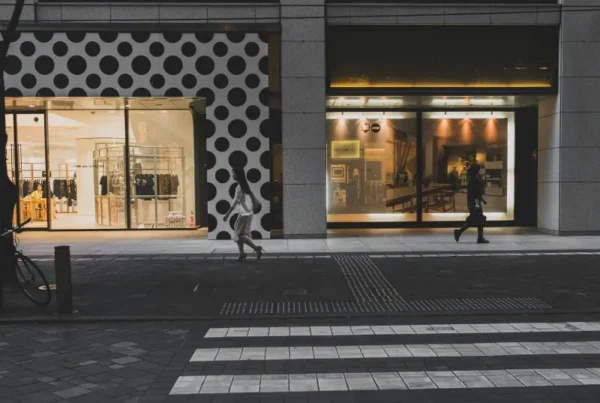Commercial window film is a highly versatile product for improving the aesthetics and performance of your windows.
Something that many people don’t realize is that you can also use window film for doors — as long they’re made of glass or contain glass components.
That’s right. You can easily apply different films to commercial entryway doors or interior doors to obtain a wide variety of aesthetic and functional benefits.
However, with all the different types of window film out there, it can be hard to know what the best film for doors is!
With our 30+ years in the window and door film industry, we’re more than equipped with the knowledge and experience to help make your decision easier. That’s why we’ve put together this comprehensive guide to help you weigh your options and choose the best door film (or films) for your needs and goals!
Does Film for Doors work for Any Type of Door?
Any door that’s partially or completely made of glass is a candidate for door film. For example, we often apply film to all-glass doors or metal-framed doors that are part of retail storefronts or office buildings. We also frequently apply window film to doors made from wood or metal that have one or more glass panels in them, often to add privacy and/or security.
Depending on the specific benefits you’re after, you may decide to use different types of films for your entryway doors vs for different doors inside your property, such as glass conference room doors or office entryway doors. We’ll discuss combining different window films a little bit further along in the guide, but first let’s go over the different types of door films and their advantages.
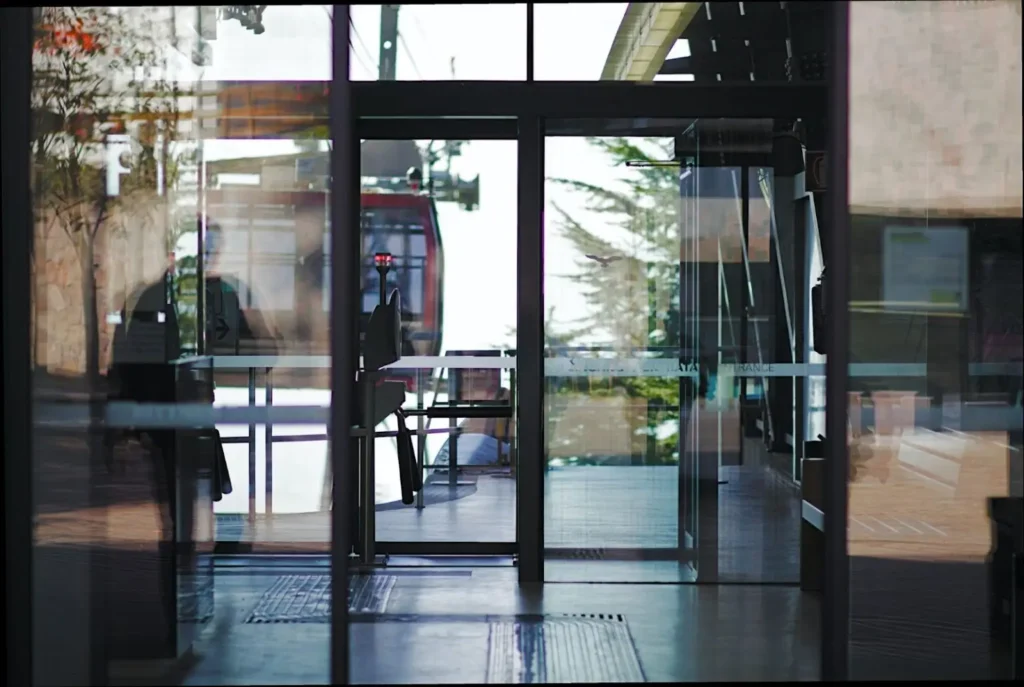
Different Types of Film for Doors and Their Benefits
There are a few main types of high-performance and aesthetic window films that can be used for doors, including:
- Safety and security film
- Privacy/tinting film
- Decorative film
- Energy-efficient film
Safety and Security Film for Doors
Safety and security window film, such as that made by industry leader 3M, is one of the most popular films for commercial entryway doors. This film is a pliable Mylar coating that gets applied directly to the existing glass, reinforcing it against impacts and holding the pieces of glass in place in the event of breakage.
Safety and security film for doors offers one of the most cost-effective ways to protect against impacts and broken glass-related injuries in commercial properties. It’s ideal for when more robust measures, such as retrofit security glazing, are out of reach in terms of budget.
Some of the top benefits of safety and security window film are:
- Storm/natural disaster damage mitigation
- Deters and delays forced entry and burglary
- Prevents broken shards of glass from flying dangerously inwards
- Increases human safety by reducing the risk of injury by glass
- Provides protection from accidental impacts
It’s important to understand that, although safety and security film reinforces the existing glass against impacts, it isn’t intended to prevent the glass from breaking. Instead, it is designed to hold broken glass in place to mitigate safety hazards, reduce damage, and delay forced entry.
For example, if a glass door protected by security film gets broken, the film retains the sharp, jagged shards instead of allowing them to fly dangerously inwards towards anyone on the other side. This drastically improves human safety wherever broken-glass hazards are a concern.
Even though security window film doesn’t stop glass from breaking during a forced entry attempt, it can delay forced entry enough to deter would-be intruders or give building occupants and law enforcement more time to react.
Privacy Film and Tinting Film for Doors
If you want to change the appearance of your door glass, tinting film is an affordable way to do so.
Door tinting film is available in a huge array of finishes, from classic dark gray and black tints to color-shifting and reflective varieties. Not only do these tinting films provide aesthetic enhancements, but they can also improve privacy in commercial buildings.
For instance, if your goal is to prevent passersby from seeing in through your private office building’s door, a dark or reflective tint on the glass is a great way to provide a high level of daytime privacy (i.e., when the light outside is brighter than inside).
We also frequently use door tinting film as part of a process known as facade re-imaging. This is a way to completely renovate and transform older building facades, giving them a contemporary facelift to improve curb appeal and NOI.
For example, we can apply a modern mirrored window film to give an old glass office building a contemporary facelift, bringing it more into line with more recently constructed buildings around it.
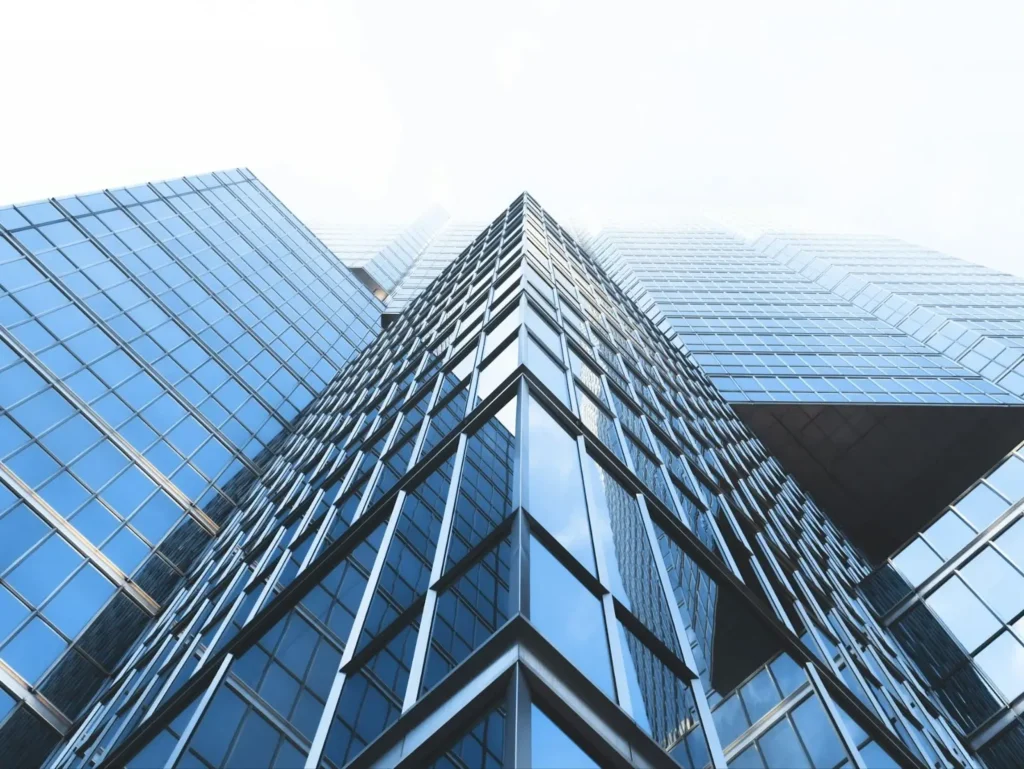
Decorative Film for Doors
Decorative film for doors is another aesthetic door film option that’s available for a variety of commercial applications.
Colored or frosted film can be used to apply logos, graphic designs, or text to commercial glass doors for branding and decorative purposes. For example, a marketing agency might use a colored film with a stylish gradient to add their business name, logo, and a unique design to their office’s entryway door.
Frosted or opaque door film is also an excellent way to add both decoration and full or partial privacy to glass doors. This is a common solution in areas like medical clinic reception and waiting rooms and glass-walled conference rooms, where you want to obscure the view of certain areas without detracting from the overall feel of the commercial space.
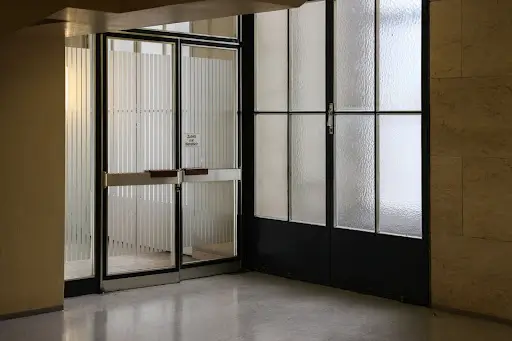
Energy-Efficient Film for Doors
Applying energy-efficient film to doors is also an excellent way to improve the energy efficiency of your building, without the high price tag of replacing all your doors with the latest technology.
Low-e, or low-emissivity, film insulates glass doors to reduce solar heat gain and loss through the glass. In other words, it makes you less reliant on air conditioning when it’s hot outside, and less dependent on heating systems when it’s cold.
If you apply this type of insulating film to all your building’s doors and windows, it can make a very significant difference in your monthly utility bills. In fact, so much so that the installation is typically an investment that pays for itself within just a few years of the date of install.
Here are the key benefits of low-e film for doors:
- Reduces solar heat gain through door glass
- Helps keep cool/warm air from HVAC systems in
- Blocks approximately 99.9% of the sun’s harmful UV rays
- Reduces glare
- Slows fading of furnishings
- Can provide significant year-round energy savings
Can I Use Multiple Films for Doors?
You don’t have to limit yourself to just one of the door film options mentioned above. It’s possible to combine various types of door films to achieve the perfect combination of aesthetics and performance.
For example, you might combine safety and security film with tinted film to boost safety, security, and privacy all at once. You could also choose to combine reflective window film with low-e film to modernize your building aesthetically and energy efficiency-wise.
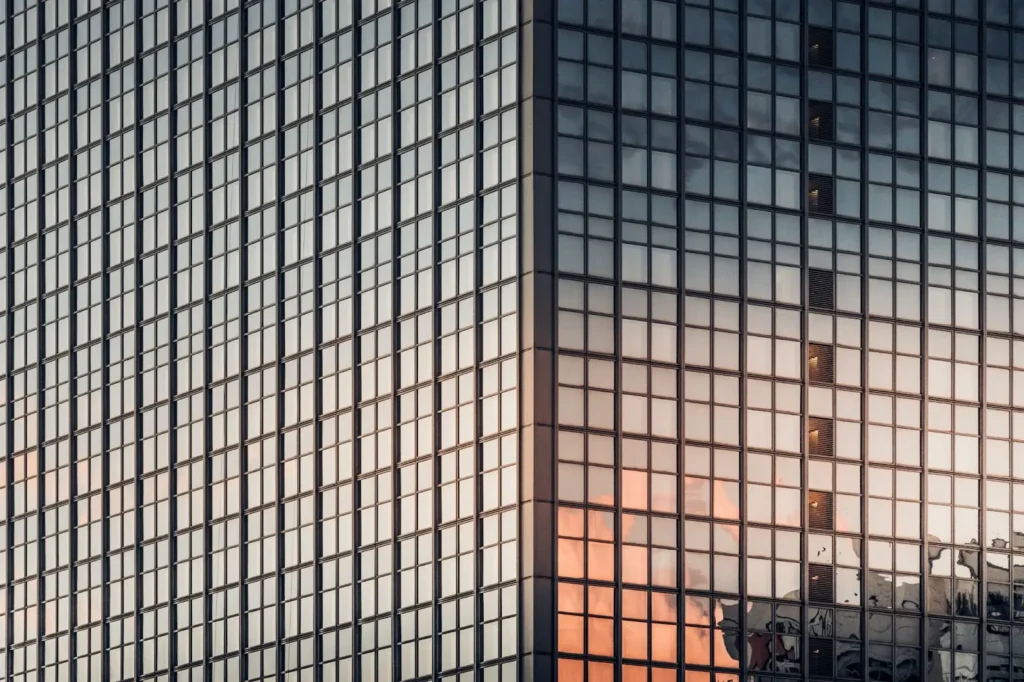
Keep in mind that not all combinations of window films work on all glass doors, so it’s important to get a professional consultation from the experts at Campbell Glass and Films before you make any final decisions.
Additionally, installing window film on doors incorrectly can result in inefficient glass performance and bad aesthetics, and can even damage your expensive commercial door glass.
So make sure to entrust your door film application to the professionals at Campbell. We have the experience and expertise to ensure you get the return on your investment you want!
At Campbell, we offer a full range of window and door films, commercial door film installation services, facade re-imaging, commercial building energy consulting, and much more! Contact us today for a free consultation.



